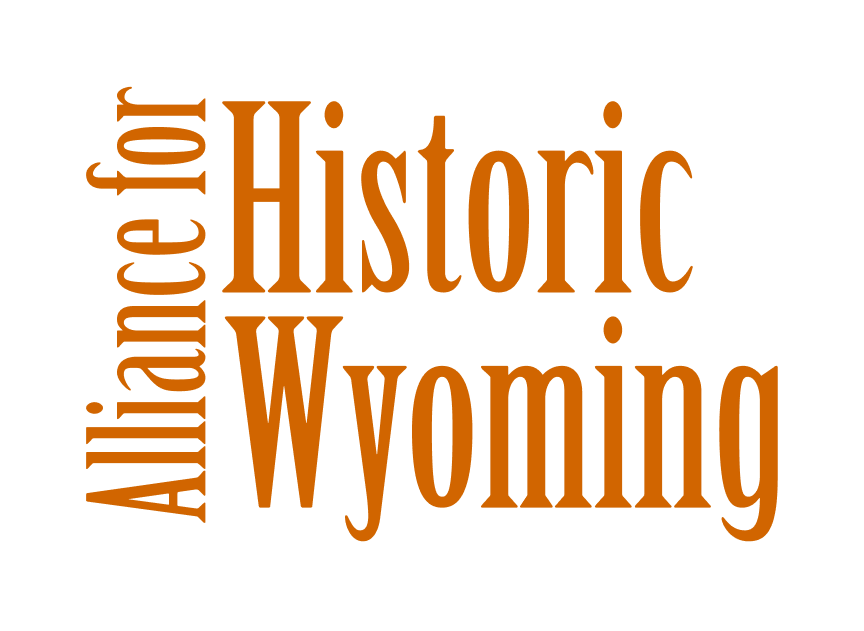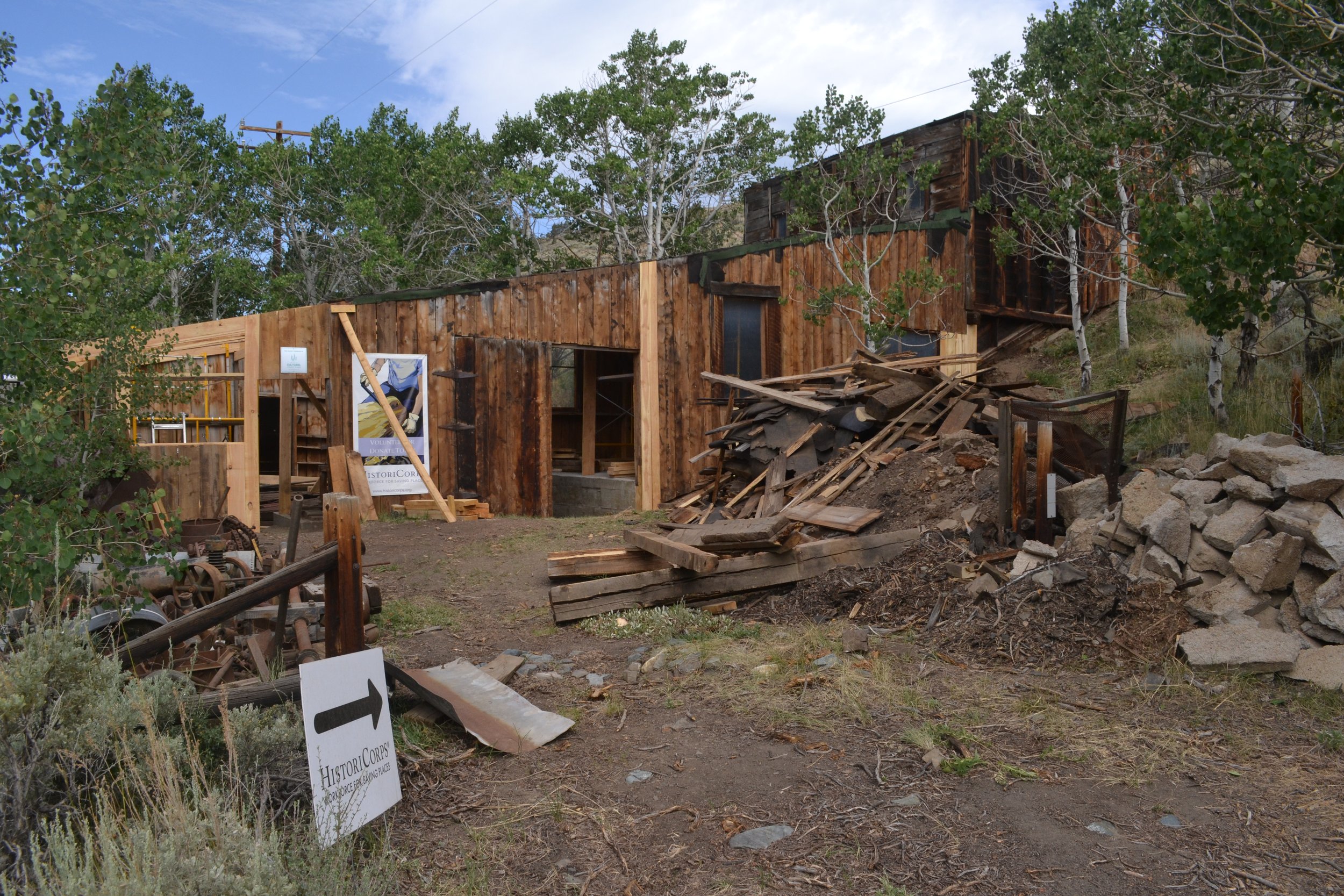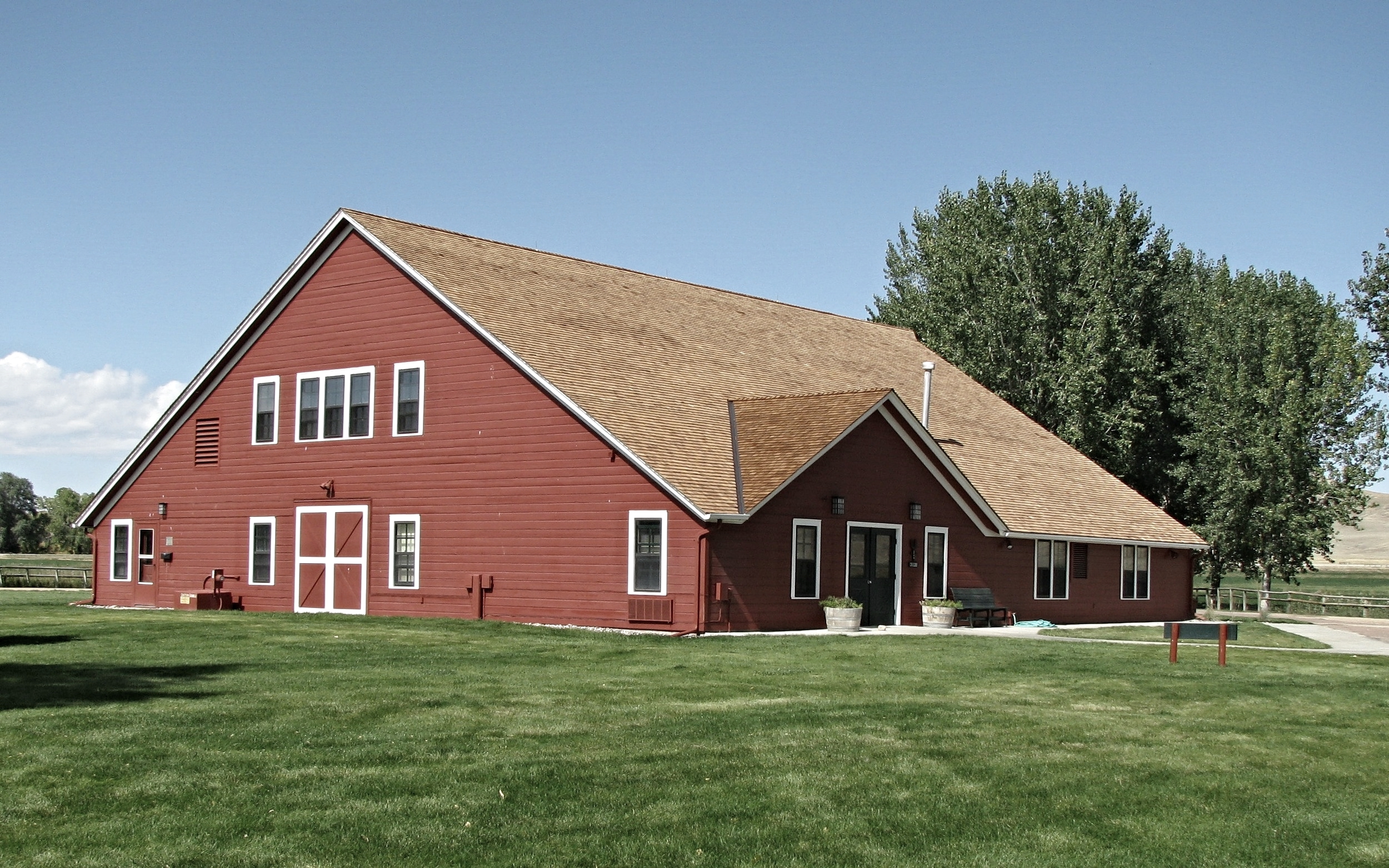Through the Ages: Saving Wyoming’s Historic Mining Heritage
By: Gina Clingerman
Nestled at the southern end of the Wind River Mountains in central Wyoming is a collection of log structures, cabins, saloons, and mills that were once part of the bustling South Pass and Lewiston Mining Districts. The buildings are mute sentinels of time, silently watching countless generations ebb and flow like the great tides of a once ancient sea that covered the vast expanse of Wyoming approximately 100 million years ago. Like this sea and its many fossils, these buildings are souvenirs, relics of a way of life that existed not long ago. And as such, they are being preserved by the hard work of a handful of organizers and volunteers through a cooperative effort created by the Bureau of Land Management (BLM) in partnership with HistoriCorps (HC), supported by the Alliance for Historic Wyoming (AHW) and the Atlantic City Historical Society (ACHS).
Lemley Mill work as of July 2022, showing Wyoming Cultural Trust Fund and HistoriCorps. signs. Photographer: Mary Humstone 7/24/2022.
The creation of this project, Restoration of Historic Mining Structures in the South Pass and Lewiston Mining Districts, was initiated by the BLM in 2017. In 2019 the BLM and HistoriCorps entered into a Cooperative Agreement with the express goal of stabilizing and restoring 13 individual and unique mining structures in the South Pass and Lewiston Mining Districts. The preservation of historic properties like these buildings for future generations is part of the BLM’s overall mission and is mandated by federal laws and regulations like the Historic Preservation Act (HPA) and the Archaeological Resources Protection Act (ARPA).
The BLM could not successfully complete this project without the support of our partners mentioned above. Each partner deserves their own recognition in this work. HistoriCorps “is a 501(c)(3) nonprofit that provides volunteers of all skill levels with hands-on experience preserving historic structures on public lands across America. Volunteers work with HistoriCorps field staff to learn preservation skills and put those skills to work saving historic places that have fallen into disrepair. HistoriCorps works to ensure America’s cultural and historical resources exist for generations to come.” HistoriCorps field staff have been excellent sources of knowledge and their dedication to the historic details is awe-inspiring.
The Alliance for Historic Wyoming is statewide historic preservation nonprofit “dedicated to protecting Wyoming’s historic and cultural resources in both the built and natural environments.” They “work with individuals, organizations, and state and local governments to identify places that represent Wyoming’s history and culture and take the necessary steps to ensure that these important places survive – respecting the story of past generations and enriching our lives for the future.” The AHW was instrumental in helping fund the stabilization and restoration of the Lemley Mill by applying for and receiving a Wyoming Cultural Trust Fund grant. This funding helped pay for building and stabilization supplies to preserve the Lemley Mill for another 50 years.
The Atlantic City Historical Society is a local nonprofit organization that seeks to research and educate the public on the history of the Atlantic City area and advocate for the protection of historical resources in the area for the benefit of future generations. They have a wide collection of research materials available to the public on their Facebook page. Their enthusiasm, local knowledge, and volunteer hours have benefited the project immensely.
Buildings that were chosen for stabilization and restoration efforts had to possess the following characteristics: 1) be located on BLM-administered lands, 2) have an intact building(s), 3) be associated with historic mining in either of the two districts and 4) must be eligible for the National Register of Historic Places (NRHP) under Criterion C – construction of a type or works of a master.
Buildings that possess these characteristics were chosen for stabilization and restoration efforts and were evaluated by BLM and HistoriCorps personnel in 2019. After these evaluations were completed, the buildings were ranked by priority, meaning that the buildings in the worst shape or presenting the most danger to the public were ranked towards the top, and buildings that were in better shape that are safer for the public were ranked towards the bottom. The Saloon at Miner’s Delight Townsite and the Lemley Mill were the top two priorities vying for stabilization and restoration efforts.
The Saloon at the Miner’s Delight Townsite was one of the first buildings to be erected. It was built in late 1867 or early 1868. It is one of the oldest buildings in the townsite as evidenced by the plethora of rose-head nails. The townsite, also known as Hamilton City, is listed on the National Register of Historic Places, and is afforded the protection and special status of a site contributing to the history of the settlement and growth of Wyoming Territory and the continued westward expansion along the Oregon and California Trails.
Stabilization and restoration efforts at the Saloon were most warranted as the roof was splitting down the center of the ridge threatening to calve off either side of the cabin. The front gable end had already fallen, and the entire structure was twisted to the north and leaning precariously. Stabilization and restoration efforts at the Saloon include dismantling the roof, labeling the components of the entire cabin, creating detailed plan maps of the cabin, dismantling the four walls, and finding the original dirt floor. Once the cabin was taken down rotten components were identified and replacement trees were selected from the surrounding forest. Those trees were cut, peeled, and prepared to be the sill logs or base of the cabin as the original sill logs had experienced the most extreme rot and degradation. Currently, volunteer crews have placed the new sill logs and are painstakingly putting the cabin back together piece by labeled piece using the detailed plan maps to make sure every log, board, and nail goes back in place.
The Saloon at Miner’s Delight predates the Lemley Mill but that does not mean that the mill is any less significant than the Saloon. The Lemley Mill was erected in the early 1930s because of the economic hardships faced by American citizens during the Great Depression. The South Pass Mining District saw an uptick in mining during the Great Depression as people left the cities and their drought-blighted farms in search of economic stability. Many mines were re-opened during this time and many more new prospect mines were created in the South Pass and Lewiston Mining Districts. This boom contributed to the continued development of the South Pass area and was significant nationally as mining boomed during this period across the western United States.
Lemley Mill is eligible for the NRHP as a building with distinct characteristics and construction methods associated with early 1900s gold milling operations. The mill is unique in that the structure is still intact and standing and that the internal machinery and mechanisms are still present and somewhat undisturbed. The machinery is a diverse assemblage of mining related equipment and tools including heavy milling equipment, motors, belts, flywheels, turbines, boilers, flotation mill, and a Wilfley table.
Stabilization and restoration efforts at the Lemley Mill were most warranted because in the winter of 2018 or the spring of 2019 there was a catastrophic roof collapse. Heavy snows buckled the roof, and it came crashing down on the Wilfley table. The south wall was detached from the building and held in place by four or five mature aspen trees that had grown up next to the building. Stabilization and restoration efforts at the Lemley Mill include removing sediment buildup from around the mill to determine how much rot and degradation has affected the beams and timbers of the mill’s frame, removing as much of the intact equipment as possible to prepare a work area, removing the failed roof, removing and replacing the degraded tar paper from the outside of the building, removing and replacing rotten beams and supports in the mill’s frame, removing and replacing the old rotten concrete, replacing the siding where it has rotted, and much, much more.
Preserving these historic mining buildings would not be possible without cultivating partnerships around historic preservation. We have been extremely fortunate to be supported by HistoriCorps, the Alliance for Historic Wyoming, the Atlantic City Historical Society, student volunteers from Strode College, volunteers from Kaya Responsible Travel, volunteers from the South Pass State Historic Site, and the big hearts and strong bodies of our public volunteers who give their time, their sweat, and their love to this project.
We have plans to continue stabilizing and restoring the remaining 11 buildings on our list in the South Pass and Lewiston Mining Districts and we hope that you will be inspired to join us if you can or to support this work by making a tax-deductible charitable donation to the Alliance for Historic Wyoming and/or HistoriCorps. If you are interested in volunteering for subsequent stabilization and restoration efforts please reach out to Gina Clingerman at the Bureau of Land Management, Wyoming State Office, gclinger@blm.gov or contact HistoriCorps at https://historicorps.org/lemley-miners-wy-2022/.




